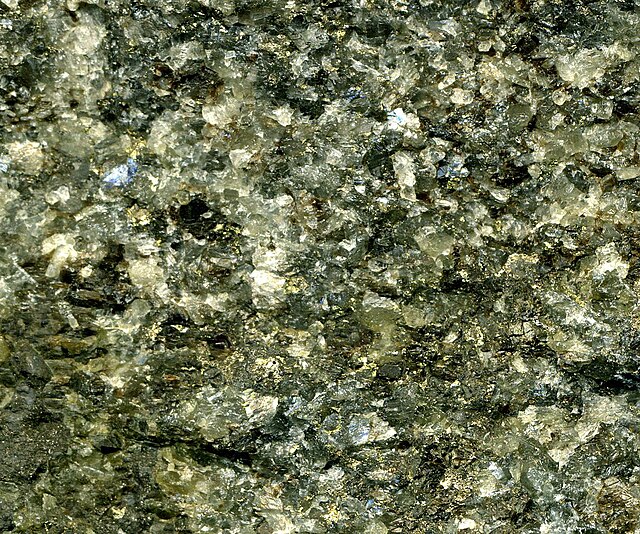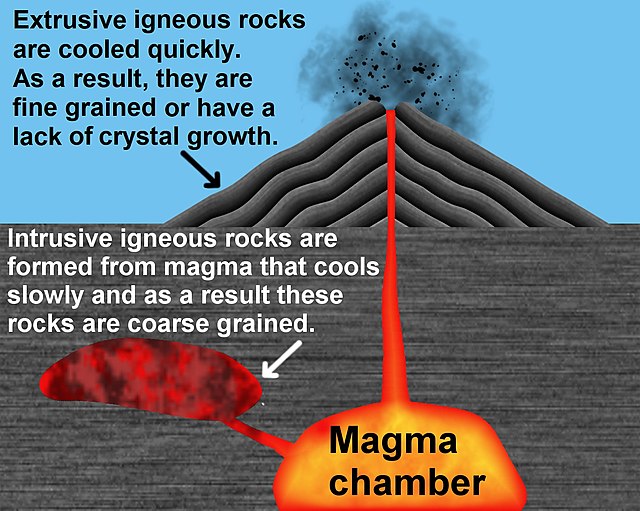Cumulate rocks are igneous rocks formed by the accumulation of crystals from a magma either by settling or floating. Cumulate rocks are named according to their texture; cumulate texture is diagnostic of the conditions of formation of this group of igneous rocks. Cumulates can be deposited on top of other older cumulates of different composition and colour, typically giving the cumulate rock a layered or banded appearance.
Close-up view of a cumulate rock from Montana (scale: about 45 millimetres (1+3⁄4 in) across)
Layers of cumulate rock (gabbro) in Oman
Dark layers of chromite-rich cumulate rock alternating with light layers of plagioclase-rich rock in the Bushveld Igneous Complex, South Africa
Igneous rock, or magmatic rock, is one of the three main rock types, the others being sedimentary and metamorphic. Igneous rocks are formed through the cooling and solidification of magma or lava.
Geologic provinces of the world (USGS) Shield Platform Orogen Basin Large igneous province Extended crust Oceanic crust: 0–20 Ma 20–65 Ma >65 Ma
Volcanic eruptions of lava are major sources of igneous rocks. (Mayon volcano in the Philippines, erupting in 2009)
Natural columns of igneous rock separated from each other by columnar joints, in Madeira
Formation of igneous rock







